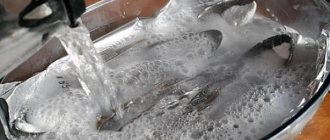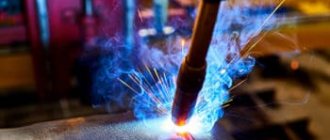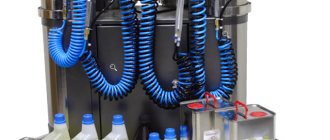Bronze products are widely used among amateur craftsmen who make various objects of art, weapons and accessories, jewelry, etc.
The lack of a production base is not an obstacle to the work; the main problem is the lack of information about the properties, melting point of bronze and processing modes of copper alloys. Most amateurs do not know that bronze casting is also done at home; the main thing is to follow the technology and provide the necessary conditions for the process to proceed.
Classification
Bronze alloys according to their composition are divided into:
- Tin.
- Tinless.
As the name implies, this refers to the presence or absence of tin in them. The latter are aluminum, silicon, beryllium and others, depending on the main alloying component.
Additives affect the quality of the alloy in different ways:
- Tin – adds strength and improves anti-friction properties. Large amounts of tin make metal brittle.
- Beryllium strengthens the material well; its properties are comparable to steel.
- Lead – improves corrosion resistance.
- Aluminum – again corrosion resistance and anti-friction qualities.
- Iron – improves structure and strength properties.
According to their technological properties, bronzes are divided into:
- Processable by pressure (deformable) - well stamped and forged.
- Foundry.
Methods for obtaining copper
There are different technologies for producing copper. But each individual technology has more than one stage. Copper is obtained from ore. As mentioned above, the melting point of copper made it possible for even ancient people to cope with its processing. The most remarkable thing is that already in ancient times people were able to develop a method for obtaining and further using both pure copper and alloys.
The melting process is a change in the state of a metal from solid to liquid. This is exactly what the fire was used for, and thanks to the low melting point, this procedure could be done without much difficulty. To obtain alloys, tin was added to molten copper. It could be obtained by reducing it from a special tin-containing ore (cassiterite). This alloy is called bronze, which is much stronger than copper. Bronze was also used in ancient times to make weapons.
It was also possible to extract a purer metal from copper ore by smelting. Everyone knows that each metal has its own melting point, which in turn depends on the amount of impurities present in the ore. For example, copper, which has a melting point of 1083 ° C, when mixed with tin, forms a new material - bronze. And the melting point of bronze is 930-1140°C, and the temperature is different because it depends on how much tin it contains. Well, if you are interested in learning more, for example, what color bronze is or what bronze composition is, then this information can also be found on the Internet.
Marking
The marking principle is as follows:
- They write the letters Br (meaning “bronze”).
- Write letters denoting alloying elements:
- Write numbers indicating the percentage of each element. For wrought bronzes, the numbers are written at the end of the markings in the same order as the letters. For foundries, a number is written after each alloying component. For example:
BrOF10-1 – deformable bronze. Tin is approximately 10%, phosphorus is 1%, the rest is copper. Or:
BrA10Zh3 – cast bronze, where aluminum is 10%, iron is 3%, the rest is copper.
There may be other impurities, but their number is insignificant.
A little history
Bronze is actually the first alloy that humanity began to use. In the 3rd millennium BC. e. craftsmen actively used copper for a variety of purposes. Some types of ore contained a small percentage of tin. When processing this material, people noticed that such copper is denser and harder than ordinary copper. Thus, this became the birth of a new historical and cultural period, which is now known as the “Bronze Age”. Further research led to the discovery of tin, which began to be specially added to copper to obtain a high-quality alloy for making tools and jewelry.
Bronze metallurgy qualitatively increased the productivity of a wide variety of industries in which humanity was occupied at that time. Melting gradually improved, and people began to make special stone molds in which various products could be cast repeatedly. Gradually, closed molds were invented, which made it possible to make weapons and jewelry with complex designs and patterns.
Read also: Operating rules for drilling machines
Is it possible to cast bronze at home?
The good news is that this metal can be melted not only in industrial conditions, but also at home. True, “home” is a relative concept. You won't be able to pour in your kitchen. You need at least a separate room with good ventilation. This is for small things, such as small art castings. For large parts you will need a garage or hangar.
Bronze has low shrinkage - less than 1%, and is used to make precision castings. But in any case, it will not be possible to achieve industrial quality casting. And most importantly, you need to follow safety precautions and fire safety! They will be discussed at the end of the article.
Bronze scrap is used as a raw material; you can melt down plumbing parts with your own hands. The industry produces metal in ingots.
Melting point of bronze and how to melt and cast at home
Bronze is a copper-based alloy that does not contain nickel and zinc as the main alloying components. Characterized by a relatively high melting point, the metal becomes liquid in the range from +940°C to +1300°C. The most refractory is tin-phosphorus.
Bronze alloys are used to produce long products, sheets and pipes, engine parts, elements of transmission devices, liners for shut-off valves, fittings, taps, souvenirs, instrument parts and much more. You can make casting at home. Bronze is smelted in muffle furnaces or furnaces.
At the melting temperature, bronze becomes thick and does not flow well into the mold; you need to know some tricks in order to do casting yourself.
How to make a casting mold
The material for the mold (equipment) in non-industrial conditions is sand or clay mixture (casting into the ground) and gypsum.
Examples of mixtures for casting into the ground:
- sand, clay, coal dust in a ratio of 75% - 20% - 5%.
- clay, fireclay brick, thin sawdust, ratio 40% - 40% - 20%.
The components are mixed until a homogeneous consistency is obtained.
A model of a product made of wood or other material can also be used. It can also be a finished part, a sample.
A device for preparing sand equipment - a flask. It consists of two boxes without a lid, usually wooden. The lower one has a bottom, the upper one has no bottom (essentially a frame). The parts of the flask have centering elements for their precise location relative to each other. They are sometimes fastened together with clamps.
The equipment is made as follows:
- Before work, the surface of the flask and the product sample are sprinkled with talc.
- The sand mixture is poured into the bottom box to the edge and compacted.
- The model parts are placed in a flask on the ground and pressed.
- The upper frame is placed on the lower box of the flask.
- A truncated cone is attached to the model with its narrow part to the product. This is a model of the sprue; the melt will be poured through it. It is desirable that the sprue location be the thickest part of the product. It must be taken into account that the finished part may have defects at the pouring site.
- The upper flask is filled to the top with the mixture. They're ramming again.
- A model of the sprue is taken out of the sand.
- Use a sharp thin object to separate the upper and lower halves, marking the parting line. The upper flask with the sand mass in it is removed, and the product is carefully removed from the sand.
- The mold parts are dried and put back together.
The parting line is chosen so that the part can be removed from the tooling without damaging it. In addition, sometimes an “air vent” is made in the part of the product opposite the sprue. This is the same hole in the tooling as the sprue. Air escapes from the cavity through it during the filling process.
Main stages
To obtain high-quality cast products, strict adherence to the technological sequence is required. The casting process is as follows:
- Making a model or copy according to a sketch or drawing. Materials for the model are easily melting at low temperatures: stearin, paraffin, wax and others. The ability to completely fill the volume of internal space in a mold has made these materials widely used.
- The gating system is attached to the model by gluing, soldering or mechanical fastening. Thus, feeders, channels, vents and other elements are formed.
- The production of injection molds is made from a refractory mixture. The main composition of the mixtures is fireclay or alumina clay and quartz sand.
- The mold is released from the model composition by heating with steam or immersion in heated water.
- Typically, bronze casting is carried out by free pouring using centrifugal machines, excess or insufficient pressure (vacuum).
- Cooling is done in air or using a thermostat.
- After cooling, the model form collapses. The gating system is cut off. The workpiece is sent for cleaning using washing or chemical compounds.
Pouring metal
In order to melt the material you will need:
- Melting muffle furnace, preferably with a heating regulator. For large castings you need a forge. Sometimes the material is melted with an autogen, a blowtorch, a gas or gasoline burner.
- Crucible - a steel, cast iron or fireclay (fireclay) container for melting, preferably with a spout.
- Tongs and a hook for removing the hot crucible from the furnace and other manipulations.
- Casting shape. How to prepare it for work is described below.
- Flux. Needed to protect the alloy from oxidation by air. Charcoal, borax.
- Fuel for the forge, for example, is the same charcoal.
- Ceramic or birch stick for stirring the melt.
Brass
For example, brass is an alloy of zinc and copper with a melting point of 900-1050°C. When the metal heats up and melts, the crystal lattices begin to collapse. During the melting process, the temperature of the metal gradually increases, and then from a certain point it becomes constant, but the heating remains the same. At the moment when the temperature stops at a certain value, the melting process begins. And at the moment the metal melts, the temperature remains at the same value, but when the metal is completely melted, the temperature will increase again.
This process occurs with respect to any metal. Well, during the cooling process, the reverse process occurs, namely: first the temperature drops until the metal begins to solidify, and then remains constant. Once the metal has completely hardened, the temperature begins to drop again. All metals behave this way; this process is depicted graphically; it will take the form of a phase diagram, which will clearly show the state of the substance at a specific temperature level.
Many scientists use such phase diagrams as the main tool for studying the processes that occur with metals during melting. For example, if already molten metal is continued to be heated, then when a certain temperature is reached, the mass will begin to boil. For example, copper boils at a temperature of 2560 °C. Regarding metals, this process is also called boiling, since, by analogy with a boiling liquid, gas bubbles appear on its surface.
Video: Melting copper in a graphite crucible
Casting technology
- Pieces of raw material are placed in a crucible and heated in an oven to the desired temperature (50-100˚ Celsius above the pouring temperature) and held for 4-5 minutes. Overheating is undesirable, since some alloy components can burn at high temperatures. Before pouring, the melt is stirred several times with a stick. Melting is carried out under a layer of flux. It isolates the metal from the air and prevents oxidation.
- The crucible with liquid metal is removed from the furnace using a hook and tongs. Be sure to use a spoon to remove the slag from the surface of the melt.
- Using a thin continuous stream, the material is carefully poured into the tooling cavity through a special hole (sprue).
- When the metal has cooled, the hardened product is removed. Sometimes the melting mold is opened and the part is knocked out or the equipment is destroyed if it is disposable.
If the part has complex geometry or is very small, the melt may not squeeze out all the air from the cavity, and defects may appear on the part. In this case, centrifugal casting is used. The equipment is installed in a rotating centrifuge. Under the action of centrifugal force, the liquid metal is evenly distributed throughout the mold cavity. The centrifuge drive can be manual or electric.
Preparing the form
Before work, the mold is warmed up. The oven is heated to 500-600˚C, the equipment is placed there and the temperature in the oven is increased to 900˚C. Calcinate for 2-5 hours. The time depends on the size of the mold. Then it is taken out and cooled to 500-600˚C. After this, the metal can be cast.
Necessary equipment
As in most non-ferrous metallurgy enterprises, the equipment used to produce bronze depends on many factors: the raw materials used, the characteristics of the smelting, the composition of the finished bronze, the financial capabilities of the enterprises, and so on. Smelting is still a very delicate and highly probable process, and two identical plants can use completely different technologies.
Read also: How to make compost from sawdust
For smelting, a device and furnace power are selected that would ensure the fastest possible melting of copper and other components. There are several options for this.
- Electric furnaces - arc and induction . The latter can be with or without a steel core. Recently, induction crucible furnaces have become more common. In this case, it is easier to prepare the device for a new melt, and the waste in such furnaces does not exceed 0.5–1%.
- Electric arc furnaces with indirect heating - the arc is formed between horizontal graphite electrodes. During melting, the furnace rocks at an ever-increasing angle as the temperature rises. In this way, local overheating of the melt can be avoided.
For casting copper alloy, various types of gating systems are used. Their design is determined by the composition of the alloy, the size and configuration of the casting, and so on.
- The most common device refers to expanding systems with siphon - bottom, and top side inlet. This design is universal and allows you to obtain parts of both simple and complex configurations.
- To obtain blanks with simple configurations, rain or top gating systems are used.
- If castings are produced from alloys that do not form high-strength oxide films, then devices without complex slag traps are used. Otherwise, such a device is necessary.
- If you need to obtain small-sized workpieces, you can use systems with bottom supply.
Next, bronze producers in Russia are considered.
Production of high quality castings
It is possible to obtain products of higher quality than by casting into the ground. For this purpose, lost wax casting is used.
The equipment is made of gypsum. It is disposable and destructible. To make a mold, you need a model of the product made of wax, paraffin or other fusible material. This material should be lighter than water. The following will explain why this is important.
A wax model is also made by casting into plaster casting. Models of complex configuration are made from several parts. And plaster equipment for the model is made according to the original product or its model, similar to equipment made from sand. The result is a chain: original product - plaster mold for wax model - model - plaster mold for metal - finished product.
When the tooling for the product is ready, a wax model is melted from it by immersing the mold in hot water or simply heating it. The melted wax flows out of the cavity through the same hole into which the metal will then be poured. That is why the material of the model must be lighter than water - so that when smelted in water it rises to the surface.
You can familiarize yourself with the process by following the instructions in the video provided.
Foundry models
Artistic casting of bronze and brass involves obtaining the smoothest possible surface, so fairly hard materials are used to recreate the model:
- wood;
- gypsum;
- Ivory.
To obtain the smoothest possible surface, it is subjected to elimination of porosity by puttying, priming and varnishing. Casting models are made detachable; one-piece - suitable for casting products of simple shapes; special for parts with a rather complex configuration.











